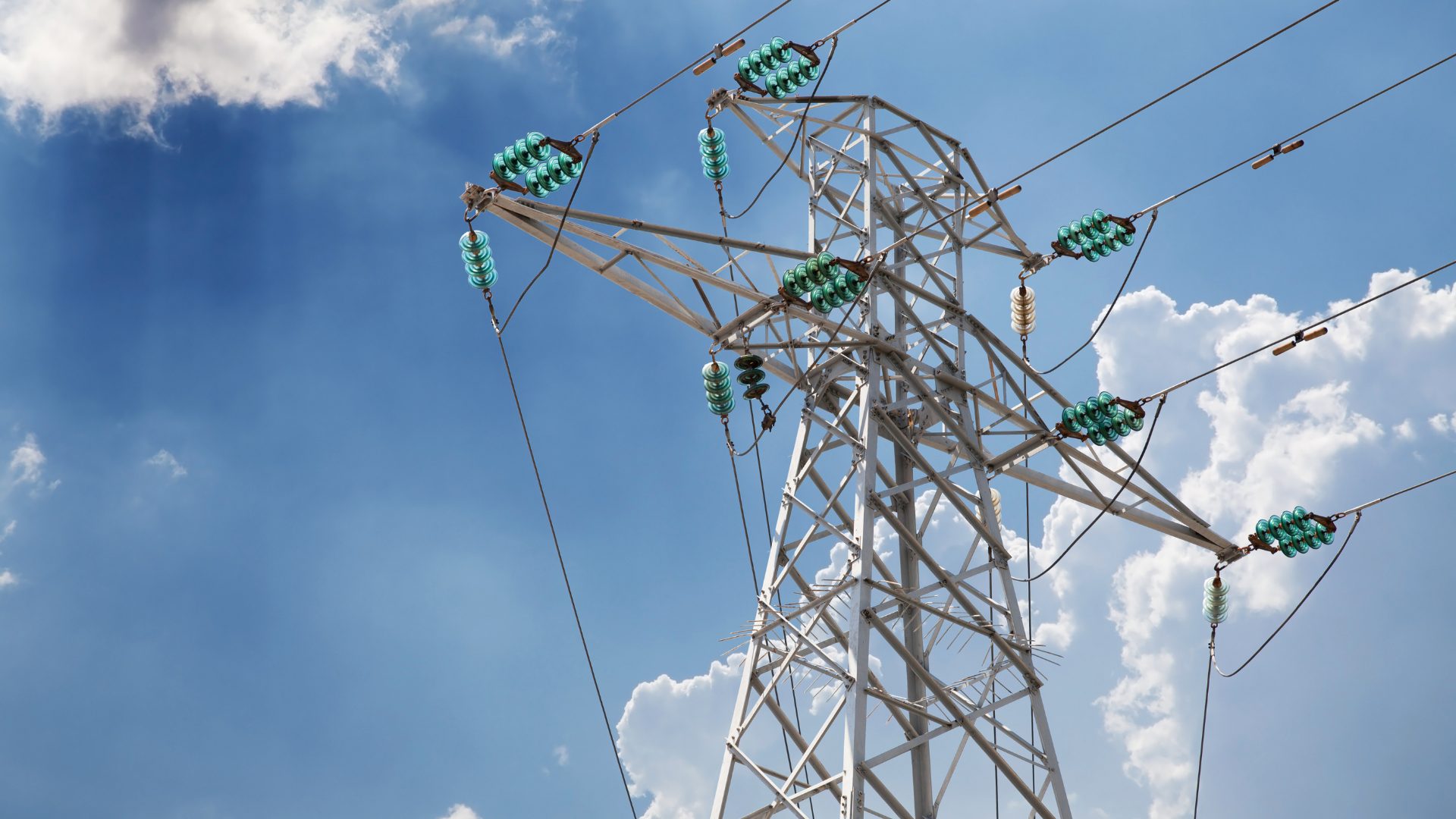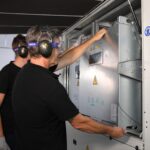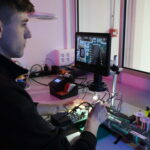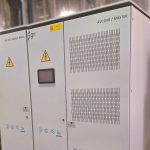 To understand what might have happened on the recent blackout in the Iberian Peninsula, it is essential to grasp one of the key characteristics of an electrical system that is closely related to its stability: The Inertia of the System. In simple terms, inertia is the system’s ability to maintain (or slow down the rate of change in) its operating parameters (essentially voltage and frequency), when sudden imbalances occur between demand and generation (when more energy is produced than consumed, or vice versa). It is as if the system had a stored resource that allows it to handle imbalance events without abrupt disruptions, but rather in a gradual manner.
To understand what might have happened on the recent blackout in the Iberian Peninsula, it is essential to grasp one of the key characteristics of an electrical system that is closely related to its stability: The Inertia of the System. In simple terms, inertia is the system’s ability to maintain (or slow down the rate of change in) its operating parameters (essentially voltage and frequency), when sudden imbalances occur between demand and generation (when more energy is produced than consumed, or vice versa). It is as if the system had a stored resource that allows it to handle imbalance events without abrupt disruptions, but rather in a gradual manner.
To understand what might have happened on the day the recent blackout in the Iberian Peninsula, it is important to consider a key characteristic of an electrical system that is closely related to its stability, The Inertia of the System.
To explain where this resource, this inertia, comes from, let’s take a simplified look at how the parameters that define an electrical grid or system are generated. In nuclear power plants or combined-cycle power plants, high-pressure steam strikes the blades of a turbine, causing them to spin. The turbine’s shaft is connected to an alternator, a machine that converts the rotational movement of the shaft into an electrical signal that oscillates in a wave with a specific amplitude and frequency (similar to old bicycle dynamos that generated voltage to power the bike’s light when spinning). The frequency of this electrical signal is directly proportional to the rotational speed of the shaft. If the shaft spins very fast, the electrical wave frequency will be high, and if it spins slowly, the frequency will be low. Since the frequency of the electrical wave circulating in the power grid must remain fixed as a system parameter (typically 50Hz), the turbine shaft must maintain a stable rotational speed.
The difficulty of keeping the shaft spinning is proportional to the loads (energy consumption) that the alternator supplies. In a way, as if electricity consumers (industries, homes, etc…) would be applying a braking effect on the alternator’s shaft. The higher the consumption, the more effort the turbine must exert to keep the alternator shaft rotating, which in turn requires generating more steam in the nuclear or combined cycle plant. Power generation increases as demand increases. If, for some reason, generation does not rise accordingly, the shaft would slow down, reducing its rotational frequency and consequently lowering the frequency of the electrical wave and the entire grid. Thus, when demand exceeds supply, the grid frequency drops; conversely, when there is excess power generation (causing the shaft to accelerate as the braking effect disappears), the frequency increases.
Now, it is very difficult to slow down the shaft of an alternator in a power plant of this type (a massive and heavy shaft) due to its mechanical inertia, meaning its tendency to keep spinning even if the gas steam that drives it disappears (just like a large oil tanker doesn’t stop immediately when its engines are turned off). Therefore, the rate at which the alternator shaft decreases its rotational frequency due to excess consumption (a greater braking effort) is minimized by the inertia of the generation system. In other words, the generation system has stored energy (in this case, mechanical) that helps prevent an abrupt impact on frequency when a sudden event attempts to change it. “Image 1 shows the enormous size of a typical turbine in a combined-cycle power plant.

Imagen 1: Turbina de gas SGR – 8000H de Siemens | EN: Gas turbine SGR-8000H Siemens.The above allows us to more easily understand what might have happened last Monday. Only the information from the Director of Services for the Operation of Red Eléctrica de España will be used: there were two disconnections of power generation plants; one whose effects could be compensated, but a second within a second and a half, which ultimately led the system into an oscillation that forced us to disconnect from the rest of Europe (which increased the system’s instability) until, for the first time in our history, it reached zero.
If this were true, as we have seen before, there should have been a sharp drop in the frequency of the electrical grid. The attached Graph 1, which shows the evolution of frequency during the event, seems to corroborate this explanation (a drastic drop in generation rather than excessive generation, as has been suggested in some forums).
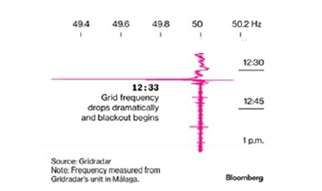
Gráfico 1: Frecuencia de la red durante los eventos (Bloomberg, fuente Gridradar) | EN Frequency of the grid during the events (Bloomberg, source Gridradar).
The question then is, why did this drop lead to a total system failure? The protection systems of various elements in the electrical grid (power plants, interconnection substations for different lines, or voltage step-up/down substations) activate when any system parameter (voltage or frequency) deviates significantly or very abruptly (in this case, not necessarily by a large amount) from its nominal value. Although the frequency variation (as observed in the graph) was not very large, it was very abrupt. As a result, protections were triggered, suddenly isolating many power plants, which further destabilized the system until it reached zero.
It is as if everything happened at a speed far beyond what response protocols for such events are designed to handle. This could only be explained if the system was already in a state of great instability (understood as a condition where a small imbalance produces dramatic effects in a short period of time). As shown in Graph 2, the system had been experiencing frequency imbalances long before 12:30, demonstrating that instability was present well before the events that ultimately led to the total blackout.
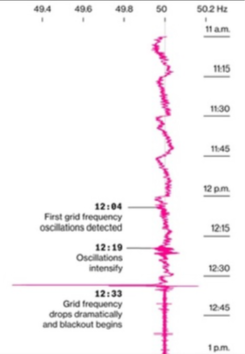
Gráfico 2: Frecuencia de la red desde hora y media antes de los eventos. | EN Frequency of the grid from an hour and a half before the events.
The question we now need to resolve is: why was the system in such an unstable state? Well, let’s go back to system inertia. The system’s inertia was very low, which prevented it from slowing down the effects of the disconnection of the two power plants, giving the operator enough time to correct the imbalance by increasing generation from other plants or disconnecting consumption.
So, why was inertia so low? Quite simply, because the proportion of renewable generation was very high, a record percentage (lots of sun and wind) at the time of the events that led to the total blackout. But why don’t renewables contribute inertia to the system? Essentially, because their moving parts are small (wind) or nonexistent (solar), meaning they lack stored energy like large nuclear or gas combined-cycle power plants, which help mitigate variations in the electrical system’s parameters.
So, what can be done? Increasing the response speed of protection systems and grid event response algorithms does not seem like a viable option, as the dynamics of generation systems or consumption cannot be easily modified to improve the system’s agility in reacting to destabilizing events.; (However, certain improvements are being achieved thanks to the increasing connectivity of monitoring and control systems).
Therefore, two options arise from my point of view (surely there are more): either we limit the penetration of renewables in the generation mix to maintain a minimum inertia (or degree of stability) in the system, or we look for ways to increase system inertia when renewable contribution rises.
If we do not want to limit the penetration of renewables, we must opt for the second option. One way to achieve this would be to keep synchronous machine-based generation systems running with minimal energy input, thus providing inertia to the system (turbines spinning with the lowest possible energy input, known as ‘technical minimum,’ established to prevent equipment damage, ensure grid stability, and optimize operation). Another approach could be to complement renewable power plants with energy storage systems that allow them to contribute inertia to the system.
The technology that has been proven today to provide some inertia to renewable power plants is based on the use of batteries.
The technology that has been proven today to provide some inertia (called ‘synthetic’ because it is based on electrical rather than mechanical energy) to renewable power plants relies on the use of batteries. The incorporation of battery energy storage capacity into renewable generation plants will increase the cost of renewable generation, which will slow down (perhaps conveniently) its rate of penetration into the generation mix (helping to prevent excessive degradation of system stability) and will improve the competitiveness of more inertia-based sources such as combined-cycle plants or nuclear power plants, which will be able to enhance their participation in the generation mix.
In any case, once a certain number of technologies have been technically validated for incorporation into a critical infrastructure such as the power generation, transmission, and distribution system, the choice of technology to be used at any given time should be based on its economic profitability. To achieve this, the establishment of a market that distributes the need for inertia among the proposed technologies based on their price should be facilitated and expedited.
Having explained the issue of abrupt frequency jumps in the system following the disconnection of power plants in southwestern Spain, was the subsequent behavior of the system, with a continuous and accelerated frequency drop to unsustainable levels, as shown in the attached Graph 3, normal? Could the total blackout have been avoided? Did the system components behave as expected? These are questions that require much more information, which Red Eléctrica de España is undoubtedly analyzing.
